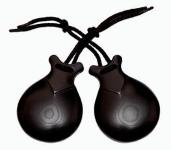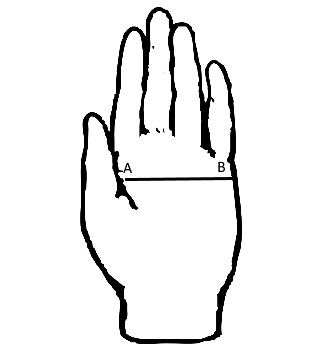History of castanets
Instantly recognizable, the sound of the castanets is a joy to hear as a prominent component in a wide range of music, not just Flamenco. Although most commonly used as percussion in European music, it can also be found in music from North Africa and countries that have had close ties with Spain in the past.
As with any musical instrument or accessory, it is important to get a sense of the overview before going ahead and making a purchase or beginning to learn. This is why we have decided here to give a quick rundown on the key facts when it comes to castanets.
Castanets are an iconic percussive instrument which are used a lot in Spanish music. Coming from the Spanish word castaina, which means chestnut, castanets are made up of a pair of shell shaped clappers – they are able to make a rhythmic pattern of sounds which accompanies music and dance.

What are castanets made of?
Traditionally castanets are made from a hard wood such as granadillo – though ebony, rosewood and pomegranate are also used. Modern castanets however are now mainly made from pressed canvas or composite fibre, and the reason for this is to reduce wear and tear, as well as not requiring the castanets to be kept in optimal temperature conditions as would be needed with the traditional wooden varieties.
How to choose your own castanets?
Purchasing your very own pair of castanets really is an investment as they can last a long time. Moreover, even should you find yourself no longer dancing, then you will find that there is a good resale market which attracts other keen dancers and players. With this in mind it is key that you make sure that you choose the right pair for you, and so there are a number of things that you should consider before making a final decision.
One of the centrally important factors when choosing is size. Unfortunately, it is not quite the case that there is standard sizing for castanets across the board. Therefore, what you will want to do it to measure the palm of your hand from point A to B under your fingers (see diagram below).

If you buy a pair of castanets that are bigger than your palm size, that will be no good. Likewise if you buy a pair to the other extreme that are much smaller than your palms, then those will also not work. If, however, you invest in a pair which are either the same size or very slightly smaller than your palm, these will work perfectly. Give us a call on 0207 493 0033 or pop into our store for further advice on choosing the right size castanets. At El Mundo Flamenco we have a wide range of castanets for you to choose from.
In the video below you will find even more tips on how to choose the right castanets, the difference in sound between the wood and fibre castanet varieties and also how to protect them.
How to play the castanets?
The way to play the castanets is essentially to play the faster rhythms on the hembra, which is the higher pitched set, and the steady single rhythm simultaneously on the macho, which is lower in pitch. To play any patterns, one has to let one of the clappers rest into one of the hands, and to strike the other clapper down, whilst looping the string around the thumb.
The hembra is worn on your leading, strong hand. So, if you are right-handed, then it will go on your right hand. The rapid clapping of the higher castanets in this way is able to provide a counter rhythm which combines with the pair in the other hand which would usually be playing a more simple single stroke pattern, thus marking out the basic tempo and rhythm of the music.
Find out what other sounds you can produce with castanets.
